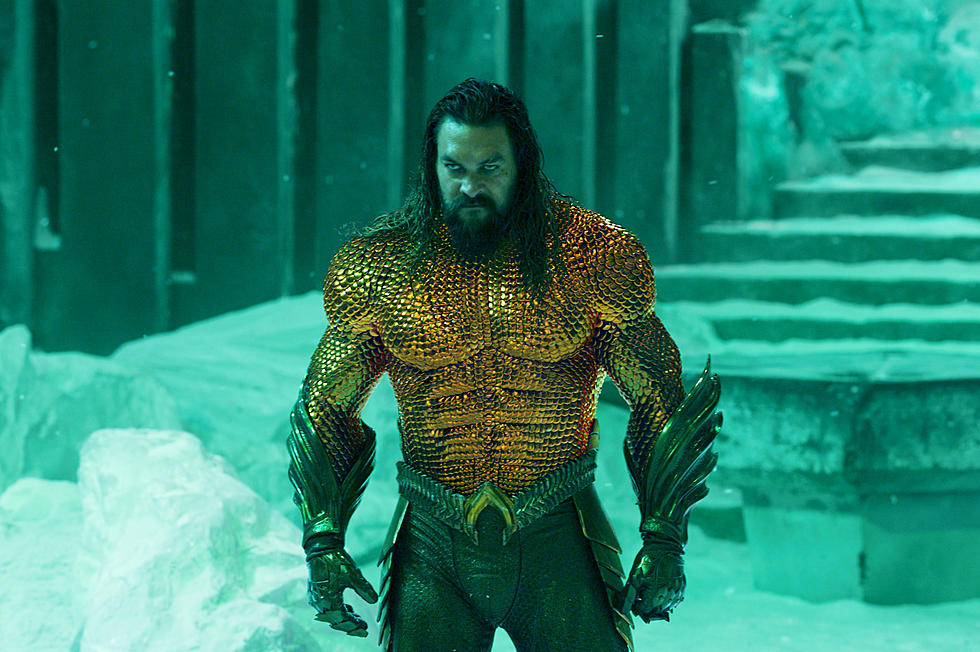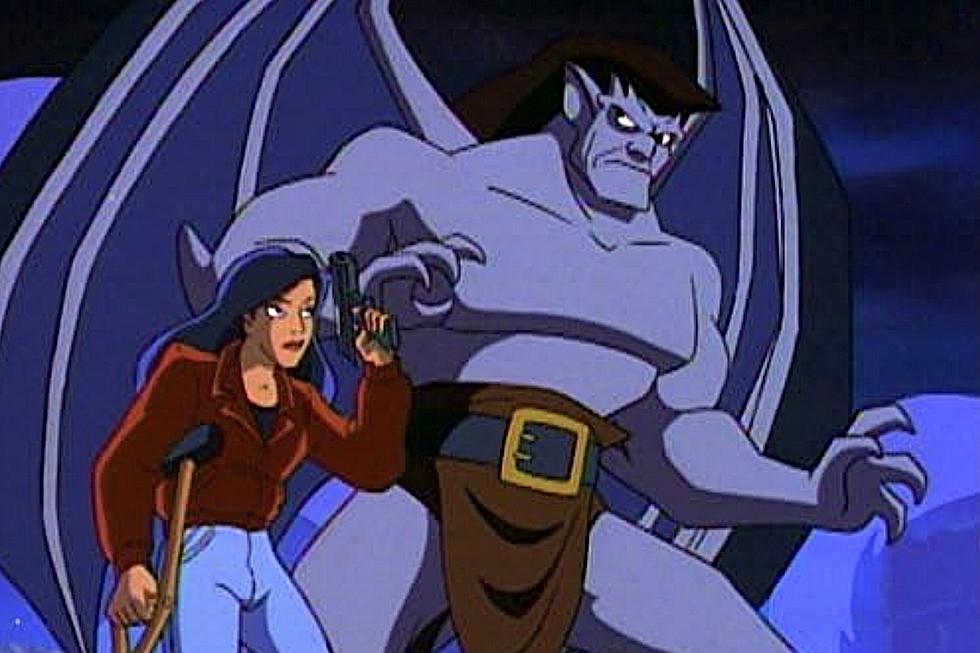
‘Lights Out’ Review: Not Memorable, But You’ll Want To Bring a Flashlight
Full disclosure: I’m afraid of the dark. As soon as I walk into a darkened room I rush to the nearest light switch. I’ll use my phone’s flashlight to guide the way if the switch is far, and sometimes I’ll leave all the lights on if I’m home alone. Your eyes play tricks on you in the dark – What was that? Oh, just the cat. Wait, I don’t have a cat! There’s security and comfort in being able to see your surroundings, which makes the premise of David Sandberg’s Lights Out even more terrifying.
In the James Wan-produced film, a gangly, creaking creature lurks in the darkness, but you can only see her when the lights go out. She first appears in dark factory filled with mannequins (which easily ups the creep factor), when a woman, played by Lotta Losten, locks up to go home for the night. Losten’s Esther turns a switch off and sees the outline of a tall slender woman with long pointy fingernails and stringy hair. Esther flicks the light on, she’s gone; off again, she’s back, and the switch flicks back and forth until Esther is too freaked out to keep testing her eye sight. It’s a nice little homage to Sandberg’s short film of the same name that went viral in 2013, in which Losten plays a woman who sees a similar figure lurking in the darkness.
The biggest strength of the short is how well it elicits dread and terror in its less-than-three minute running time. There’s no explanation or backstory, just pure spooks; and that’s what often makes an effective horror short. But translating that to a feature length film of 81 minutes requires Sandberg to fill in those gaps, and the narrative is ultimately what hurts the feature version of Lights Out the most. Written by Eric Heisserer (Final Destination 5, The Thing remake), Lights Out follows Martin (Gabriel Bateman), a young boy whose mother Sophie (Maria Bello) talks to herself when she’s off her anti-depressants. When he sees the mysterious creature lurking in his house, he begs his older half sister Rebecca (Teresa Palmer) to let him stay at her place. Rebecca, now estranged from her mother, also used to see a figure in the dark and hear her mother talking into the void.
But Sophie isn’t talking to herself, she’s talking to her friend Diana, who we learn is the name of the creature lurking in the shadows. Is it just schizophrenia? Is there really an evil thing named Diana (the fact that her name is “Diana” and not some freaky demonic moniker is kind of hilarious) hiding in the closet? Lights Out eventually explains the backstory of the woman-who-hates-the-light, combining narratives of mental illness and supernatural horror, but it’s ultimately the most undercooked element of the film.
My go-to mantra for a good horror film is always less is more. Tease me, prickle the hairs on my arms, and leave me fraught with uncertainty; don’t give me an explanation if it’s not a convincing or developed one. Some of the best horror films of the last couple years are the ones that emphasize the terrors of the effect over the cause, leaving the big questions unanswered and the evils mysterious – just think of The Babadook, The Witch, It Follows, or Goodnight Mommy. A successful horror movie is a rare feat lately, with studios churning out redundant stories full of recycled plots, tropes, and jump scares. But while Lights Out isn’t a memorable horror movie, it does benefit from Sandberg’s directing.
In its best moments, the film maintains the same eerie paranoia of the director’s short. The movie is heavily reliant on jump scares and loud noises, but those types of spooks make sense within this premise; when you turn the lights off, you expect something to pop out at you. Sandberg’s shots make sure to linger long enough to build tension, framing the characters so you can always see the shadowy, dark spots of the room behind them.
One of the things Sandberg’s film carries over from his original short is the piercing sound design. The short is mainly scary thanks to the sharp sound effects of a light switch clicking on and off, the slam of a door, the creaking of floorboards, and buzzing of a dimming lightbulb – the first time I watched it, something went wrong with the YouTube video and the screen was entirely black, so the sound made a strong impression. Sandberg heightens the sound even more in his feature, manipulating the audience with loud, sharp sound effects to make even the most expected jump scares feel unnerving.
In one of the film’s scariest scenes, jagged sounds of tearing played only on the speakers on the left side of the movie theater (at least in the theater I was in). For a few seconds I thought someone in the audience was tensely ripping up their box of popcorn until I realized it was coming from the movie as Diana scratched into Rebecca’s floor. The moments when the movie puts the audience into the freakish environment of its characters are its most fun, and best experienced in a theater with loud speakers.
The scares are fleeting, the plot is underwhelming, and the acting is decent at best, but Lights Out is one of the more enjoyable scary movies of the year. It has an original premise that relies on nothing more than our most basic fears. And to be honest one more time, after seeing it I did come home and turn all the lights on.
More From ScreenCrush









